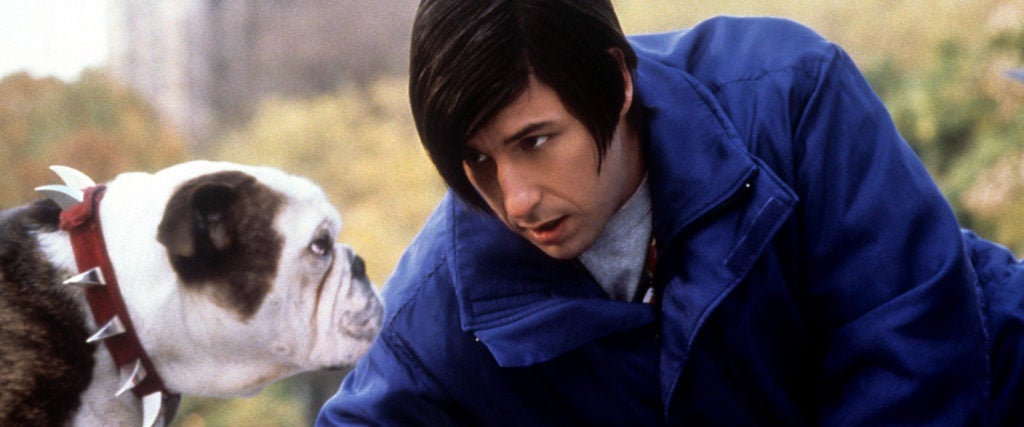Adam Sandler has been involved in some truly joyless productions. On lists of his worst films, some of his most culturally, morally and emotionally bereft features are on display, like Jack and Jill, Pixels and Grown Ups 2 — movies that exist solely to fulfill some type of capital-fueled contract Sandler must have signed. But there’s one film, often sandwiched in rankings between the 0 percent-on-Rotten Tomatoes The Ridiculous 6 and anti-Palestinian propaganda film You Don’t Mess With the Zohan, that seems entirely out of place: Little Nicky, which returned to Netflix this month.
Unlike its neighbors on the list, Little Nicky isn’t some obvious cash-grab. If it was, it certainly wasn’t successful in doing so, considering the movie came in $27 million short of its budget in box-office earnings. It also cost several million more than Sandler’s movies usually do to make, a fact that seems indicative of its aesthetic ambition: For the unfamiliar, Little Nicky is a movie that largely takes place in Hell.
Nicky, the emo-swooped protagonist played by Sandler, is the third son of Satan. Unlike his brothers, he has little penchant for evil. Instead, he prefers to spend his time playing air-guitar to Black Sabbath in his Hot Topic-esque bedroom. After his father decides he’s not ready to pass on the throne yet, Nicky’s two brothers leave Hell for New York City, where they’re determined to create Hell on Earth. In order to save Hell, Nicky must follow his brothers and attempt to capture them and bring them home.
The problem isn’t just that Nicky is too nice. In addition to having no human experiences and being unfamiliar with activities like eating, he’s also vaguely disabled as the result of being hit in the face with a shovel by one of his brothers. He has a speech impediment, a Bell’s Palsy type of facial paralysis and a slight hunchback limp.
This character trait is one reason why it’s unlikely that Little Nicky would be made today, but it’s certainly not the only time Sandler has incorporated disability into a role: Even more problematically, Sandler plays a likely intellectually disabled character in The Waterboy, wherein the protagonist is regularly ridiculed and beaten for his differences. In Little Nicky, though, his disability isn’t the issue. Instead, it’s the whole “being from Hell” thing that ultimately makes him stand out.
Of course, the movie follows the usual quest toward redemption and romance that most of Sandler’s movies do. Even if the circumstances are a bit different, Billy Madison, Happy Gilmore and Mr. Deeds, among others, are broadly interchangeable in theme and general narrative arc. But the goth-y Hell component of Little Nicky sets it apart. It’s meant to be campy and fantastical in ways other Sandler movies aren’t. The soundtrack is oddly trashy but contemporary, featuring nü-metal tracks from P.O.D., Deftones and Linkin Park. The trashiness of it all, however, is oddly sexy — while Nicky dresses as though he’s about to trek across Antarctica, the other citizens of Hell are clad in crushed velvet and faux fur.
In that sense, Little Nicky almost functions as a period piece, encapsulating a niche of the early aughts. If only for the music, fashion and Ozzy Osbourne cameo, the movie is worth watching for those of us who still fetishize the era. Perhaps Little Nicky is reviewed so poorly because of its dissimilarity from Sandler classics, but its ability to remain reminiscent of these classics while being creative and fun is what makes those reviews so myopic.
He’s Adam Sandler, for God’s sake. Don’t we want him to be a little stupid?

